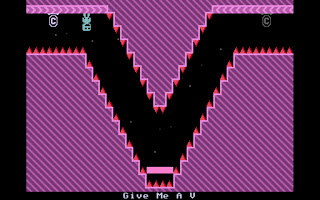Two weeks ago I attended a scheduled talk by Mike Bambury, an art director in Sony's London studio. The talk focussed on idea creation, and the methods one could use to create new untapped ideas.
Bambury began by showing us a quick introduction video, showcasing Sony games across different genres, and audiences. The diverse range of games previewed everything from, Little Big Planet 2, to Killzone 3, to several Sony Move titles like EyePet, and Sorcery.
Once the video was out of the way, Bambury began to talk about ideas and the different methods that exist to generate original ideas.
Bambury linked his talk to the author Edward Debono, and in particular, the books, Six Thinking Hats and Lateral Thinking: Creativity Step by Step. Both of these books offer different tools for idea creation. Bambury talked us through three of these tools, random entry, concept extraction and lastly, provocation.
Random Entry
The first tool, Random Entry, is simple to explain but intriguing in premise. Firstly the user has to think of two to three random words. The next step is for the user to try to associate these words into a coherent whole, thus forming a random idea for a new game.
Here's an example from the talk. Bambury asked for single words describing a space station located on the moon. Members of the talk shouted out words like, "cold", "empty", "futuristic", and "cheese". The audience participant explained that the moon could be made of cheese, hence the association. Bambury said that the "cheese" example perfectly demonstrated the point of the exercise. He asked how many games are set on a space station, on a moon made of cheese, not many obviously, so the idea is original.
At this point, Bambury showed us the next tool, concept extraction.
Concept Extraction
The second tool, Concept Extraction, involves the user trying to guess the underlining theme behind a stream of words or objects. Bambury gave an example in the talk to demonstrate this. Bambury asked us to tell him the underlining concept of words he was calling out. "Van", "Car", "Plane", "Bus". In this case the underlining theme, the concept we had extracted, was transport. So the game idea would be to make a game based around the different kinds of transport that exist, and do something new with that.
Provocation
The final tool, Provocation, is to simply take an existing idea and turn it on its head.
Here’s an example from the talk. Bambury asked us to list the fundamental aspects of a typical FPS game. We responded with “weapons”, “enemies”, “killing”, “levels”, and so on.
Bambury proposed making an FPS without those fundamental elements, to create a new, original idea. As an avid gamer I have played many examples of the FPS genre, and I cannot think of a single game that tried to remove all of those elements. Games such as Half Life 2, and Halo have integrated near seamless level progression, but you would be hard pressed to find an FPS that at its core, doesn't rely on shooting enemies. (It could be argued that Half Life 2 makes some big strides in this direction, with its focus on puzzle solving and the clever uses of the gravity gun throughout most of the game. But that's a subject for another day, I'm aiming to play Half Life 2: Episode 2 over the summer, and then write a long review about the main game and both episodes).
A practical example of provocation that comes to mind, is the platform game VVVVVV. Now, the fundamental aspect of any platformer is the ability to jump from platform to platform. In VVVVVV, however, your character Viridian cannot jump. Instead he has the ability to reverse gravity at will while touching a normal ground or ceiling surface. This gameplay mechanic results in the player frequently platforming upside down, and changing the gravity constantly in order to progress through the game. To me, this seems like an obvious example of the provocation school of thought, taking an existing idea and reversing it, in action.
Screenshot from VVVVVV
Bambury summarised this section of the talk by saying "Using provocation game designers can come up with new ideas by reversing standard practises." I can definitely see the potential for this tool when trying to come up with new, appealing game ideas.
Overall I greatly enjoyed Bambury’s ideas talk. Best of all, it made me think outside of the box when considering game design, and reminded me just how important that is.
I've decided to buy both Edward Debono books via Amazon and attempt to read them over the summer. Hopefully after reading them I should gain a greater insight into the three tools covered in Bambury's talk.
As always, thanks for reading.
Bibliography
Debono Edward, "Six Thinking Hats", 1986
Debono Edward, "Lateral Thinking: Creativity Step by Step", 1970
Games Referenced
Little Big Planet 2 (Playstation 3) , Media Molecule, 2011
Killzone 3 (Playstation 3) , Guerrilla Games, 2011
Eyepet (Playstation Move) , SCE London Studio, 2010
Sorcery (Playstation Move) The Workshop, 2011
VVVVVV (Steam) Terry Cavanagh, 2010
Half Life 2 (PC) Valve, 2004
Bibliography
Debono Edward, "Six Thinking Hats", 1986
Debono Edward, "Lateral Thinking: Creativity Step by Step", 1970
Games Referenced
Little Big Planet 2 (Playstation 3) , Media Molecule, 2011
Killzone 3 (Playstation 3) , Guerrilla Games, 2011
Eyepet (Playstation Move) , SCE London Studio, 2010
Sorcery (Playstation Move) The Workshop, 2011
VVVVVV (Steam) Terry Cavanagh, 2010
Half Life 2 (PC) Valve, 2004

No comments:
Post a Comment